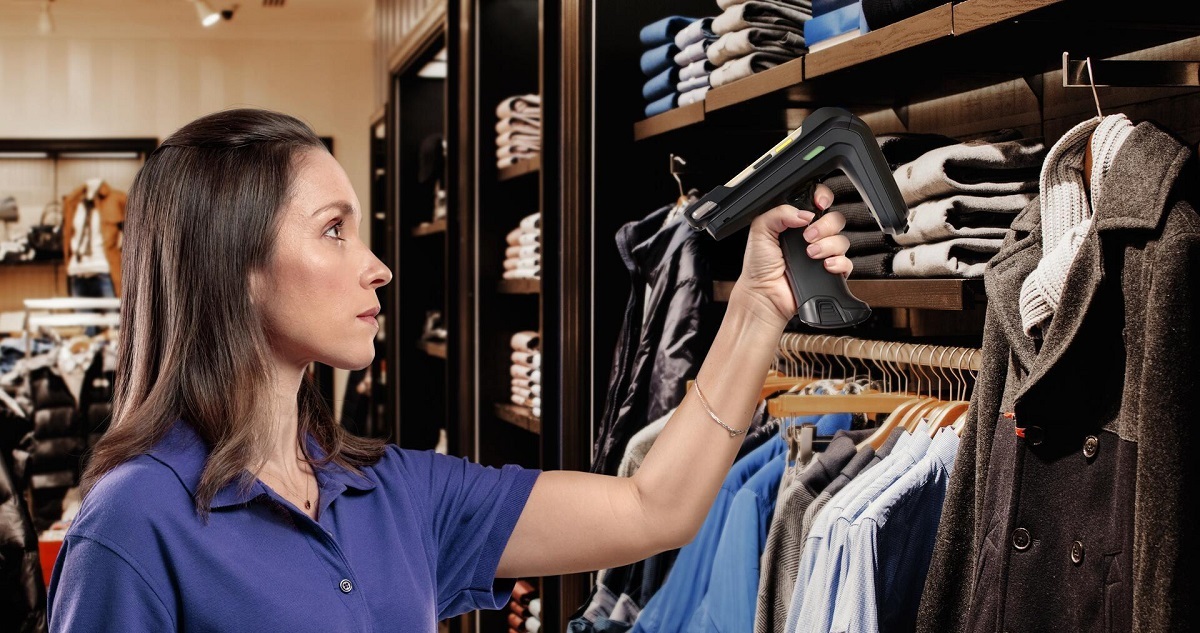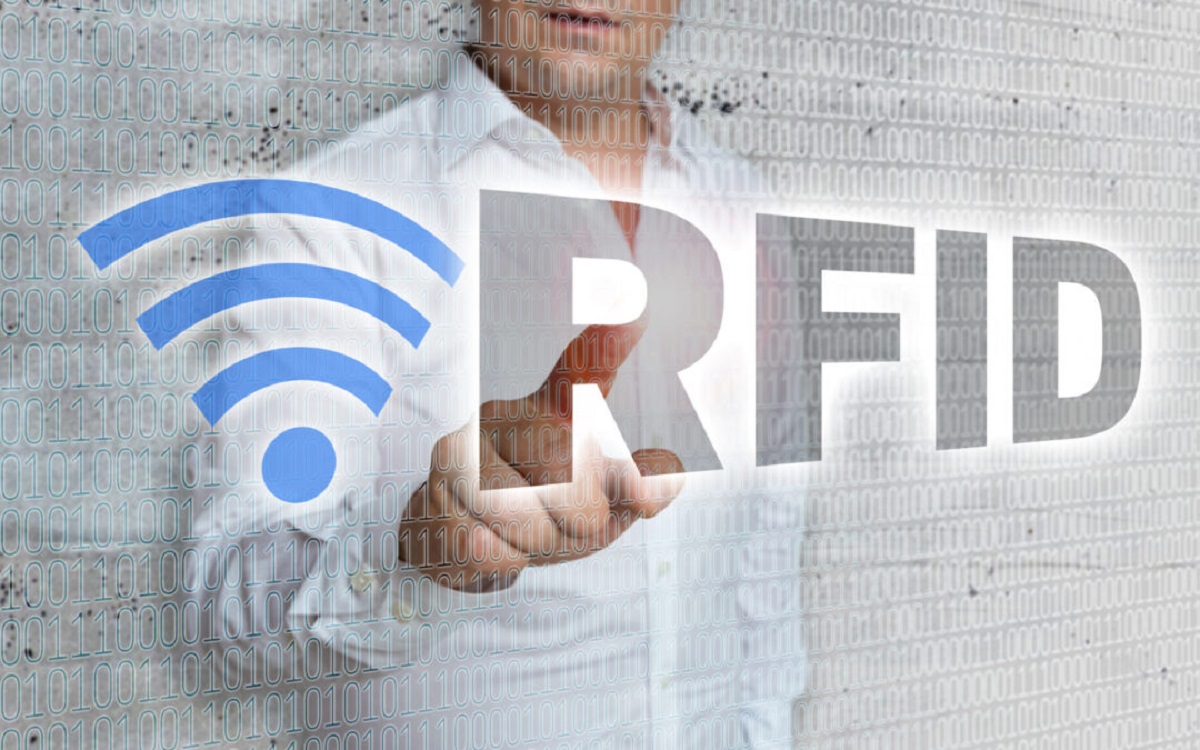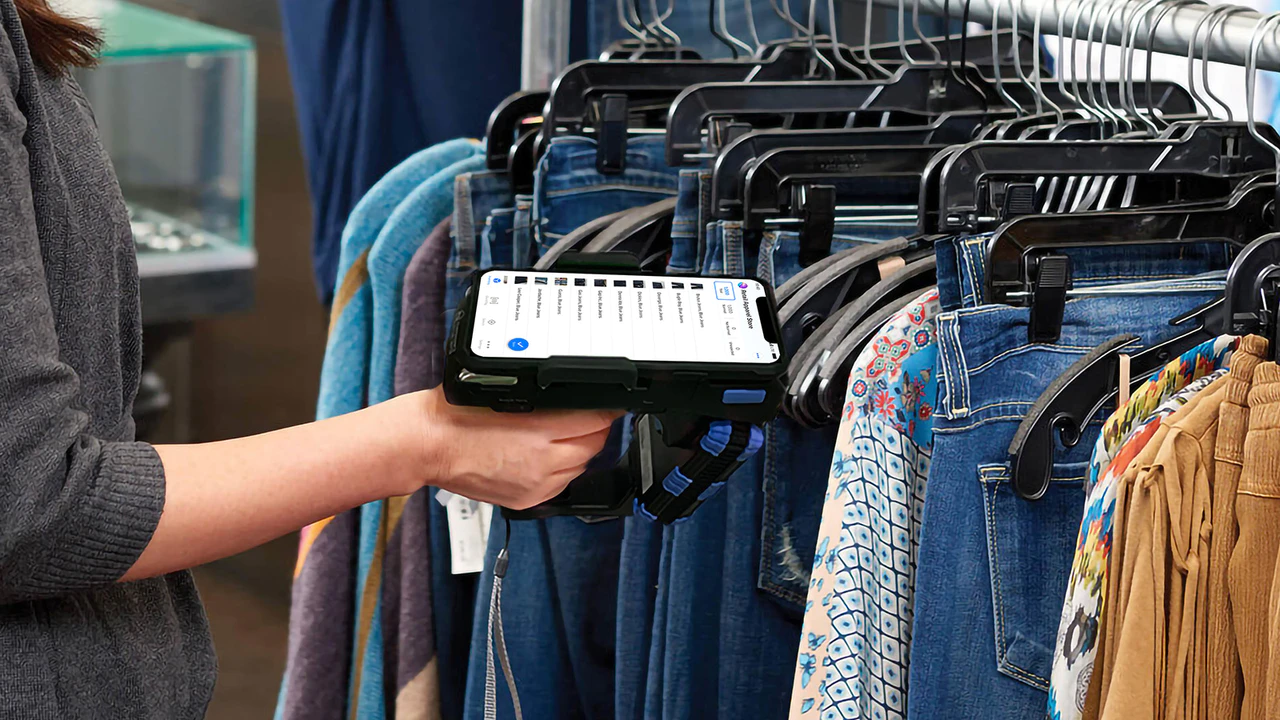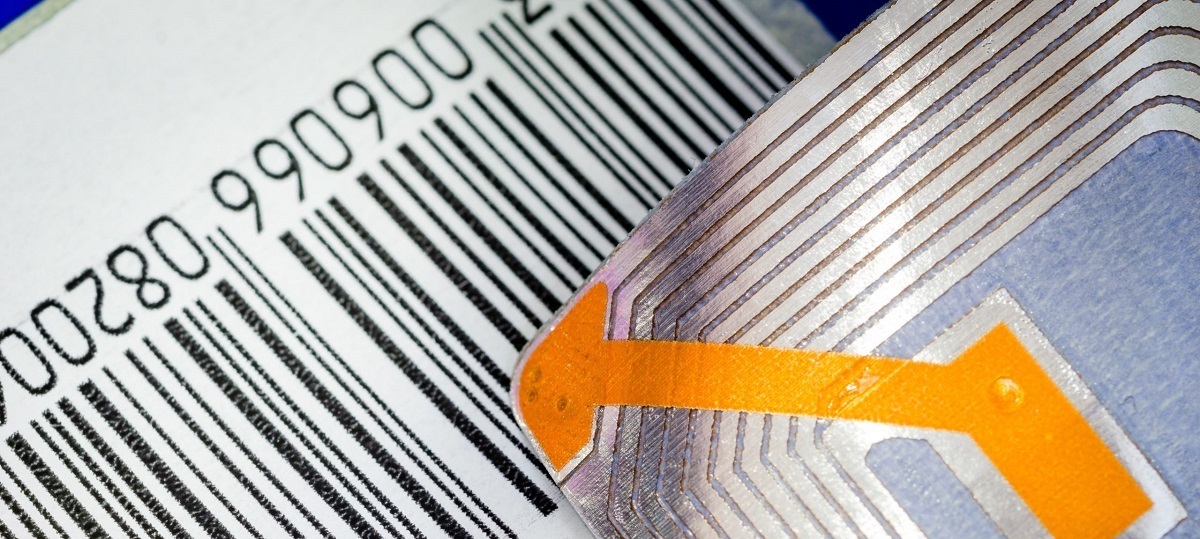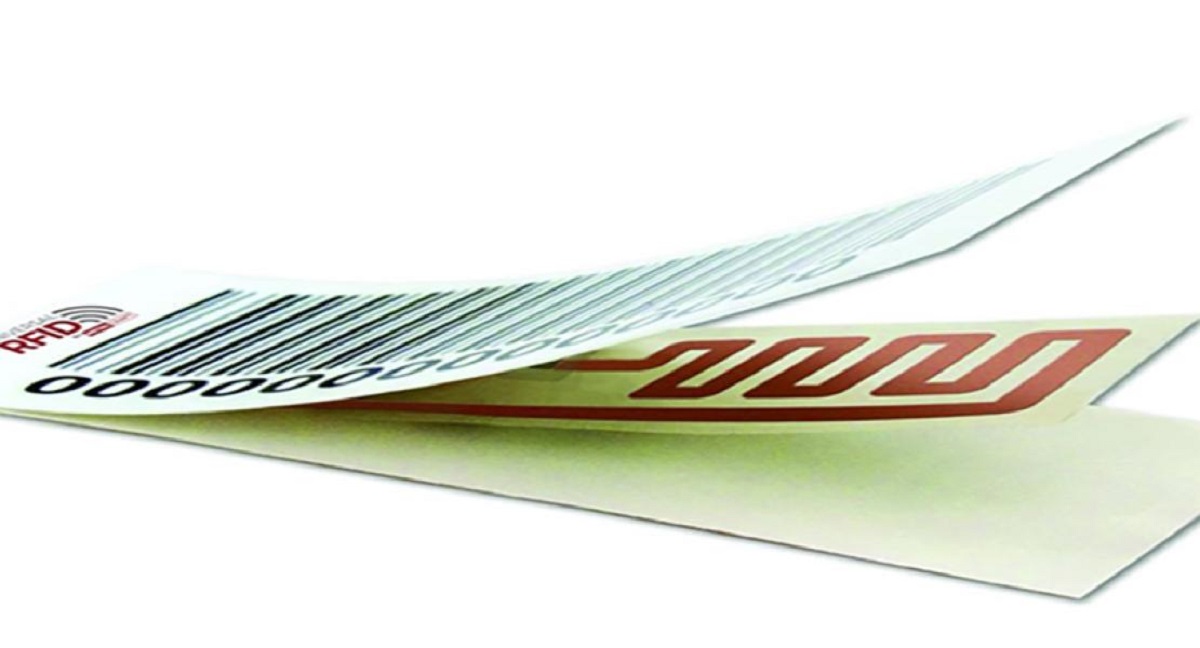Introduction
Welcome to the world of retail, where constant innovation and technological advancements are shaping the way businesses operate. The retail industry has always been at the forefront of adopting new technologies to enhance customer experiences and improve operational efficiencies. One such technology that has revolutionized the retail sector is RFID, or Radio Frequency Identification.
RFID has gained significant traction in recent years, and its impact on the retail industry cannot be overstated. From inventory management to supply chain optimization, RFID technology offers numerous advantages that can help retailers stay ahead of the competition in today’s fast-paced retail landscape.
In this article, we will explore what RFID is, how it works, and delve into the specific applications and benefits of RFID in the retail industry. We will also discuss the challenges associated with implementing RFID technology and examine real-world use cases that showcase the transformative power of this technology.
By the end of this article, you will have a clear understanding of RFID and its role in shaping the future of retail. So, let’s dive in and explore the fascinating world of RFID in the retail industry.
What is RFID?
RFID stands for Radio Frequency Identification and is a technology that uses radio waves to wirelessly identify and track objects. It is an automatic identification and data capture (AIDC) technology that enables retailers to accurately and efficiently track inventory and gain real-time visibility into their supply chain.
At its core, RFID consists of three main components: tags, readers, and a backend system. RFID tags are small, electronic devices that contain a unique identifier and can store additional data. These tags can be attached to or embedded in objects, such as products or packaging. RFID readers, on the other hand, are devices that emit radio waves and capture the information transmitted by the tags. The backend system processes and manages the data collected by the readers, providing valuable insights to retailers.
Unlike traditional barcode systems, which require line-of-sight scanning, RFID tags can be read remotely and can store much more information. This enables retailers to track items at every stage of the supply chain with greater accuracy and speed. RFID technology also allows for multiple tags to be read simultaneously, making it ideal for high-volume inventory management.
RFID can be categorized into two types: passive and active. Passive RFID tags do not have a power source and are powered by the RFID reader when they come into proximity. Active RFID tags, on the other hand, have their own power source and can transmit signals over longer distances. Each type has its own advantages and is suitable for different use cases in the retail industry.
In the next section, we will explore how RFID technology works and the various components involved in its functioning.
How does RFID work?
RFID technology utilizes electromagnetic fields to enable communication between RFID tags and readers. The process involves three main steps: tag initialization, tag detection, and data capture.
During the initialization phase, RFID tags are encoded with a unique identifier, which is typically a combination of numbers or alphanumeric characters. This identifier is stored in the tag’s memory along with any additional information specific to the tagged item.
When an RFID tag comes into the range of an RFID reader, the reader emits radio waves to energize the tag. Passive RFID tags, which don’t have their own power source, draw power from the electromagnetic field generated by the reader. Once energized, the RFID tag can transmit its unique identifier back to the reader using radio frequencies.
The reader captures the identifier and sends it to the backend system for processing. The backend system matches the received identifier with the corresponding item in its database, allowing retailers to retrieve real-time information about the tagged item.
It’s important to note that RFID technology allows for simultaneous reading of multiple tags, as the reader can communicate with multiple tags within its range. This makes RFID a highly efficient technology for inventory management, where hundreds or even thousands of items need to be tracked in a short period of time.
RFID technology can be implemented in various ways, depending on the specific needs of the retailer. For instance, RFID tags can be attached to individual products, product packaging, or even pallets and containers. This enables retailers to track items at different levels of granularity, from individual units to entire shipments.
Overall, RFID technology offers a powerful and flexible solution for automating data capture and enabling real-time visibility into inventory. In the next section, we will explore how RFID is being used in the retail industry and the benefits it brings to businesses.
RFID in Retail
RFID technology has made a profound impact on the retail industry, revolutionizing various aspects of retail operations. From inventory management to customer engagement, RFID has emerged as a valuable tool for retailers looking to streamline their processes and enhance the shopping experience.
One of the key areas where RFID is being widely implemented is inventory management. Traditional methods of inventory counting and tracking, such as manual stocktaking or barcode scanning, can be time-consuming and prone to errors. RFID technology allows retailers to automate these processes, enabling real-time, accurate inventory tracking. Tens or even hundreds of RFID tags can be read simultaneously, drastically reducing the time and effort required for inventory audits. This not only improves stock accuracy but also helps retailers prevent stockouts and optimize inventory levels.
RFID technology also enables more efficient supply chain management. By attaching RFID tags to products, retailers can track the movement of goods from manufacturer to distribution center to the store shelves. This real-time visibility into the supply chain allows for better demand forecasting, reduced out-of-stock situations, and improved overall supply chain efficiency. With RFID, retailers can identify bottlenecks in the supply chain and make data-driven decisions to optimize logistics and distribution processes.
In addition to inventory and supply chain management, RFID technology is being leveraged for enhancing the shopping experience. RFID-enabled interactive displays and smart shelves can provide customers with product information, recommendations, and personalized offers as they browse through the store. This not only improves engagement but also allows retailers to gather valuable data on customer preferences and behavior, enabling targeted marketing campaigns and personalized shopping experiences.
RFID technology is also helping retailers combat theft and minimize shrinkage. By tagging high-value items or applying RFID tags to packaging, retailers can implement advanced anti-theft systems that trigger alerts when an item leaves the store without proper authorization. This not only acts as a deterrent to theft but also helps recover stolen items and reduce losses.
Overall, RFID technology is transforming the retail industry by streamlining operations, optimizing supply chain processes, improving inventory accuracy, enhancing the customer experience, and reducing losses due to theft. In the next section, we will explore the specific benefits of using RFID in the retail sector.
Benefits of Using RFID in Retail
Implementing RFID technology in the retail industry brings a multitude of benefits that can positively impact the overall operations of a business. Let’s explore some of the key advantages of using RFID:
- Improved Inventory Accuracy: RFID allows for real-time, automated inventory tracking, leading to improved accuracy and visibility. Retailers can easily track stock levels, monitor product movement, and make faster, data-driven inventory management decisions.
- Enhanced Supply Chain Efficiency: With RFID technology, supply chains become more streamlined and efficient. Real-time visibility into inventory levels, along with accurate demand forecasting, helps retailers keep stock levels optimized and reduce out-of-stock situations. This leads to improved supply chain management and better customer satisfaction.
- Increased Operational Efficiency: RFID enables automation of previously manual tasks, reducing the time and effort required for processes such as inventory audits and stocktaking. This frees up staff time for more value-added tasks, ultimately improving overall operational efficiency.
- Better Omnichannel Capabilities: RFID technology enables seamless integration between online and physical retail channels. Retailers gain a holistic view of their inventory, ensuring accurate stock levels across all sales channels. Customers can enjoy improved order fulfillment, omnichannel purchasing options, and easier returns and exchanges.
- Enhanced Customer Experience: By leveraging RFID, retailers can provide a more personalized and interactive shopping experience. Interactive displays, smart shelves, and RFID-enabled loyalty programs enable retailers to deliver relevant product information, personalized offers, and recommendations, creating a more engaging and satisfying shopping experience.
- Reduced Shrinkage and Theft: RFID can help minimize retail shrinkage and theft by implementing advanced anti-theft systems. RFID tags can trigger alarms when products are moved without authorization, acting as a deterrent to theft and reducing losses.
- Data-driven Insights: RFID generates vast amounts of data that retailers can utilize to gain valuable insights into customer behavior, buying patterns, and operational performance. By analyzing this data, retailers can make informed decisions to optimize processes, personalize marketing strategies, and improve overall business performance.
These benefits demonstrate why RFID technology is a game-changer in the retail industry, allowing businesses to streamline operations, enhance the customer experience, and achieve competitive advantages. In the next section, we will discuss the challenges associated with implementing RFID in retail.
Challenges of Implementing RFID in Retail
While the benefits of RFID technology in the retail industry are numerous, there are also a few challenges that businesses may encounter when implementing RFID. It’s important to be aware of these challenges and plan accordingly to ensure a successful RFID deployment. Let’s explore some of the key challenges:
- Cost: The initial investment in RFID infrastructure, including tags, readers, and backend systems, can be a significant barrier for some retailers. While the costs of RFID technology have been decreasing over time, it is still important to carefully consider the return on investment and long-term benefits.
- Integration: Integrating RFID technology into existing retail systems and processes can be complex. Retailers need to ensure compatibility with their existing software, inventory management systems, and point-of-sale solutions. Proper integration is crucial to ensure a seamless flow of data and maximize the benefits of RFID technology.
- Tag Placement and Readability: Ensuring optimal tag placement on products and packaging is critical for reliable tag readability. Retailers need to consider factors such as tag orientation, distance between tags, and interference from other objects. Proper tag placement and testing are essential to achieve accurate read rates and minimize tag failures.
- Interference and Range: Radio frequency interference can impact RFID tag readability. Metallic or liquid materials, electromagnetic fields, and physical obstructions can all disrupt the reading process. Retailers must carefully design their RFID infrastructure to minimize interference and ensure sufficient read range for their specific use cases.
- Tag Costs and Sustainability: The cost of RFID tags can still be a significant expense for retailers, especially when large volumes are required. Additionally, the environmental impact of RFID tags and their disposal can be a concern. Retailers should explore options for sustainable tag materials and responsible disposal to address these challenges.
- Staff Training and Change Management: Introducing new technology like RFID requires training and change management for staff who will be working with the system. Providing comprehensive training and clear communication about the benefits of RFID technology is essential to gain employee support and ensure smooth adoption.
Despite these challenges, many retailers have successfully implemented RFID and reaped the benefits. By carefully addressing these challenges and planning for a well-executed RFID deployment, retailers can overcome obstacles and unlock the full potential of RFID technology in their operations.
In the next section, we will explore real-world use cases that demonstrate the practical applications of RFID technology in the retail industry.
Use Cases of RFID in Retail
RFID technology has found numerous practical applications in the retail industry, transforming various aspects of operations. Let’s explore some compelling use cases that highlight the versatility and advantages of RFID:
- Inventory Management: RFID enables accurate and real-time inventory tracking, leading to improved efficiency and reduced stockouts. With RFID tags attached to products, retailers can quickly locate items, automate inventory audits, and streamline replenishment processes. This results in better inventory accuracy, optimized stock levels, and more efficient supply chain management.
- Automated Checkout: RFID technology allows for seamless, contactless checkout experiences. With RFID-enabled point-of-sale systems, customers can simply place their items on the checkout counter, while the system automatically scans and registers the products. This speeds up the checkout process, reduces friction, and enhances the overall shopping experience.
- Product Authentication: RFID tags can be used for product authentication, helping retailers combat counterfeiting and ensure product authenticity. By verifying the RFID tag’s unique identifier, retailers can ensure that customers are purchasing genuine and authorized products, protecting brand reputation and maintaining customer trust.
- Loss Prevention: RFID technology plays a vital role in reducing retail theft and minimizing shrinkage. RFID tags can trigger alarms when unauthorized movement of tagged items is detected, helping prevent theft and enabling quick response by store personnel. This enhances security, reduces losses, and provides a deterrent to potential theft.
- Click-and-Collect and Ship-from-Store: RFID enables efficient fulfillment options like click-and-collect and ship-from-store. By accurately tracking inventory across stores and warehouses, retailers can fulfill online orders from the nearest store with available stock. RFID technology streamlines the picking and packing process, ensuring accurate fulfillment and faster order delivery.
- Smart Shelves and Interactive Displays: RFID-enabled smart shelves and interactive displays enhance the in-store shopping experience. RFID tags on products enable dynamic pricing, personalized promotions, and interactive product information. Smart shelves detect item depletion and send alerts for restocking, optimizing shelf availability and reducing out-of-stock situations.
- Reverse Logistics and Returns Management: RFID simplifies reverse logistics processes, such as returns management. RFID tags can be applied to returned items, enabling faster and more accurate processing. Retailers can identify the status and condition of returned products, automate restocking or routing for repairs, and improve the overall efficiency of reverse logistics operations.
These use cases demonstrate the significant impact of RFID technology across various areas of retail. From inventory management to enhancing the shopping experience, RFID is empowering retailers to optimize processes, reduce costs, increase customer satisfaction, and stay competitive in a rapidly evolving industry.
In the final section, we will summarize the key points discussed and reiterate the value of RFID in the retail industry.
Conclusion
RFID technology has emerged as a powerful tool in the retail industry, offering numerous benefits to businesses of all sizes. From improving inventory management and supply chain efficiency to enhancing the customer experience, RFID technology has transformed the way retailers operate. By leveraging RFID, retailers gain real-time visibility into their inventory, streamline processes, and make data-driven decisions.
With RFID, retailers can optimize inventory levels, reduce stockouts, and improve overall supply chain management. Real-time tracking and automation enable seamless checkout experiences, efficient click-and-collect services, and enhanced fulfillment processes. RFID also aids in combating theft, protecting against counterfeiting, and improving loss prevention strategies.
Furthermore, RFID technology empowers retailers to deliver personalized and interactive shopping experiences through interactive displays, smart shelves, and targeted marketing campaigns. Data-driven insights obtained from RFID enable retailers to analyze customer behavior, optimize operations, and drive business growth.
While implementing RFID in retail may come with its challenges, such as initial costs and integration complexities, the benefits far outweigh the obstacles. By carefully addressing these challenges and planning for a successful implementation, retailers can harness the power of RFID to gain a competitive edge in the industry.
In conclusion, RFID technology has revolutionized the retail industry, providing retailers with the tools they need to thrive in today’s dynamic market. As the retail landscape continues to evolve, RFID will play an increasingly important role in driving efficiency, enhancing customer experiences, and enabling retailers to stay at the forefront of innovation.







